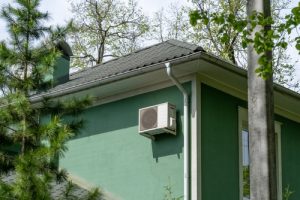 What Are Cool Roofs & Why You Need One
What Are Cool Roofs & Why You Need One
Cool roofs are becoming increasingly popular in urban areas across the world. As the name suggests, they are roofs that help keep the building cool even in the scorching heat, ultimately reducing the indoor temperature and air conditioning costs. This post will explore what cool roofs are, how they work, and why you need one.
What Are Cool Roofs?
A cool roof is a roofing system designed to reflect the sun’s radiation and absorb less heat than traditional roofing materials. They can be made of a variety of materials, such as reflective or high emissivity coatings, tiles, shingles, gravel, and green roofs.
Cool roofs work by reflecting and emitting the sun’s rays, rather than absorbing them. The materials used for the cool roof, such as metal, tiles, and shingles, are highly reflective, and they reduce the amount of heat absorbed by the roof. This, in turn, reduces the heat that enters the building, keeping it cooler and reducing the need for air conditioning.
Cool roofs typically reflect between 50 to 90 percent of sunlight, while traditional roofs reflect only 5 to 15 percent. This increased level of reflectivity translates to lower ambient temperatures, and less heat is transferred indoors, thus lowering cooling costs and improving overall energy efficiency.
Benefits of a Cool Roof
1. Reduced Cooling Costs
One of the significant benefits of cool roofs is that they lower air conditioning costs. Since the roof stays cooler, it reduces the amount of heat that enters the building, allowing the air conditioning to work more efficiently, which lowers energy bills.
An Energy Star roof reflective roof reduces peak energy use by up to 10-15 percent during the hottest summer months.
2. Increased Comfort
Cool roofs keep the temperature of the roof lower, which reduces the temperature of the indoor environment, improving occupant comfort.
3. Increased Durability
Cool roofing systems typically lasts longer than traditional roofing systems. Cool roofs are designed to be weather-resistant, and because the roof’s temperature stays cooler, it reduces the contraction and expansion of the materials during extreme temperature fluctuations.
4. Reduced Urban Heat Island Effect
The urban heat island effect occurs when cities absorb and retain heat, making them hotter than surrounding rural areas. In urban areas, the widespread use of cool roofs can reduce the urban heat island effect by lowering ambient temperatures.
5. Improved Air Quality
Cool roofs help improve air quality by reducing energy demand, which in turn reduces power plant emissions that negatively impact air quality and public health. By reducing the reliance on air conditioning, they also reduce the amount of ozone-depleting refrigerants used for cooling.
Cool Roofing Materials
There are a variety of materials used for cool roofs, and some are more effective than others. Here are the most popular materials that are ideal for cool roofs.
1. White Roofs
White roofs are the most common types of cool roofs. They reflect sunlight better than darker roofs and absorb less heat, keeping the building cooler and thus saving energy. White roofs can be made of asphalt shingles, metal roofing, tile, or a cool asphalt membrane. The higher the reflectance and emissivity of the roof material, the more effective the cooling effect.
2. Green Roofs
A living green roof is both an eco-friendly and cool roofing option. The living green roof consists of a layer of vegetation planted over a waterproof layer. This plant layer absorbs sunlight and converts it into fresh oxygen, which can help improve air quality. Green roofs also provide natural insulation, reducing the need for heating and cooling, and can reduce urban heat island effect by reducing heat absorption.
3. Metal Roofs
Metal roofs are highly reflective and can reflect up to 70 percent of sunlight compared to a typical asphalt shingle roof, which reflects only 20 percent. A metal roof can also be insulated with spray foam underneath, which can help increase energy efficiency even further.
4. Tiles
Tiles are a more expensive roofing material option, but they are highly reflective, long-lasting, and visually pleasing. They can be made of clay or ceramic, which offers natural insulation and reflects up to 80 percent of UV rays.
Conclusion
A cool roof provides multiple benefits, including reduced energy consumption, increased comfort, reduced urban heat island effects, and improved air quality. The benefits explain the increased adoption of cool roofs by homeowners and businesses alike, as they help conserve energy, save money, and reduce greenhouse gas emissions. When looking into roofing solutions, consider a cool roof to start saving energy and money and improve your environment.
